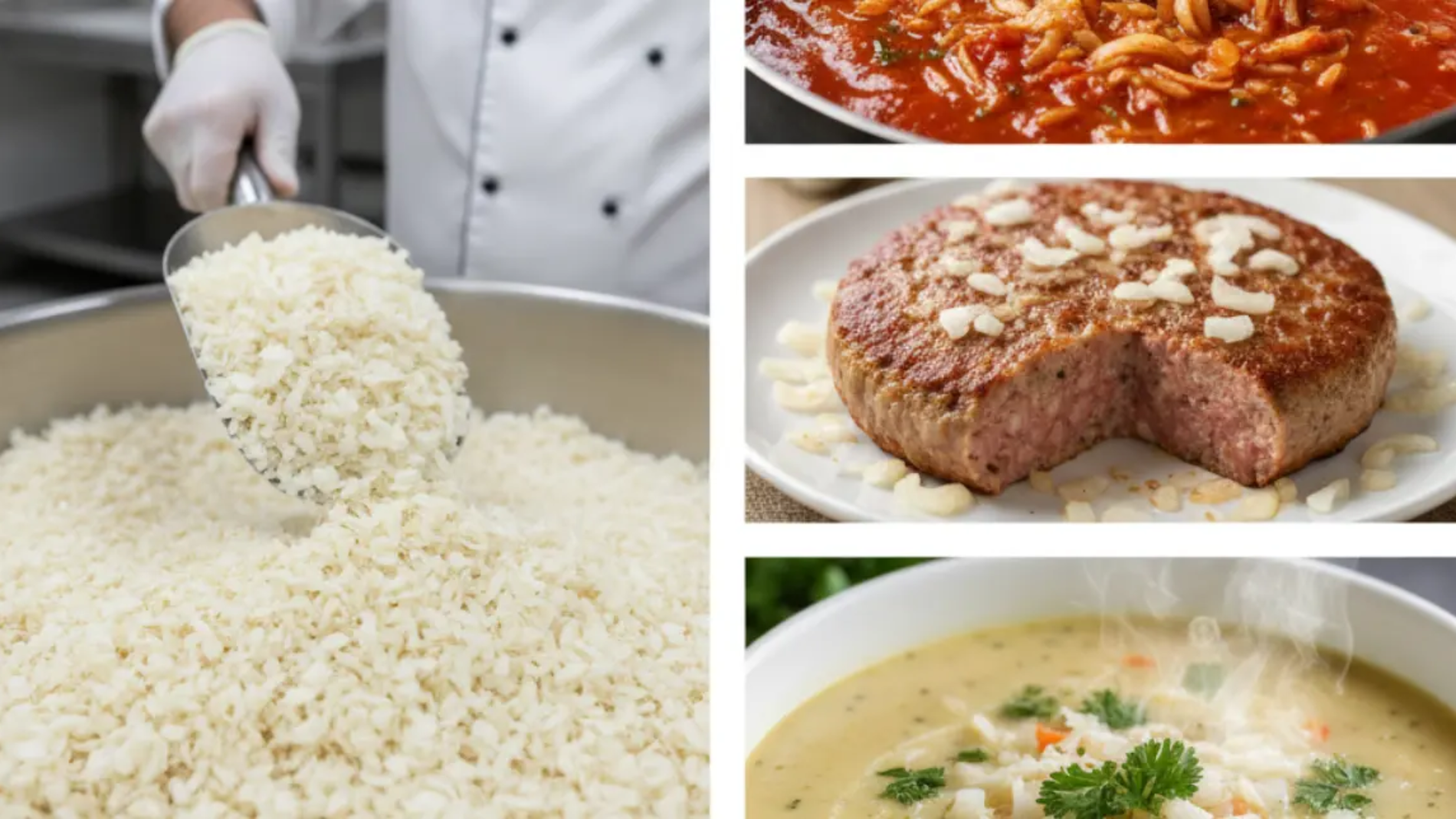In the world of large-scale food production, the most valuable ingredients are those that deliver consistency, stability, and flavour in a convenient format. While fresh onions are a kitchen staple, their high water content, short shelf life, and intensive prep time make them a challenge for industrial applications. This is why food manufacturers worldwide rely on a versatile workhorse: Dehydrated White Onion Minced.
This specific format—not as coarse as kibbled, yet not as fine as powder—is a precisely engineered industrial food ingredient designed for applications where both flavour and a subtle texture are desired. As a leading onion supplier in India, we see firsthand how this product forms the backbone of countless successful food items. Here are the top five industrial uses where minced white onion is the preferred choice.
1. Dry Soup, Sauce, and Gravy Mixes
One of the most common applications for Dehydrated White Onion Minced is in the dry-mix industry. When a consumer rehydrates a packet of onion soup mix, a chicken gravy mix, or a seasoning for a stew, they expect to see and taste real vegetable pieces.
Why it’s used: The minced onion pieces are perfectly sized to distribute evenly throughout the dry blend. Upon rehydration, they swell to a soft, pleasing texture that mimics finely chopped fresh onion.
The Benefit: It provides a crucial “homemade” visual and textural cue that consumers associate with quality. It delivers a burst of authentic onion flavour without the clumping or cloudiness that a lower-grade powder might cause. For a perfectly smooth broth, manufacturers will use onion powder, but for a heartier feel, minced is the go-to.
2. Processed Meats and Meat Alternatives
In the production of sausages, burger patties, meatloaf, and plant-based meat alternatives, flavour and moisture retention are key.
Why it’s used: Dehydrated White Onion Minced is blended directly into the raw meat or plant-protein mixture. The particles distribute far more evenly than fresh chopped onion could on an industrial scale.
The Benefit: During the cooking process, the minced pieces rehydrate by absorbing juices, helping to keep the final product moist and succulent. They release their pungent, savoury flavour throughout the product, creating a deep and consistent taste profile.
Spice Up Your Business with Authentic Indian Flavors
Import and Export Excellence from India!

3. Canned Goods and Ready-to-Eat (RTE) Meals
The high-heat, high-pressure environment of canning and retort processing requires ingredients that are robust. Dehydrated White Onion Minced is perfectly suited for this demanding application.
Why it’s used: It’s added to canned stews, chilis, baked beans, and ready-made pasta sauces.
The Benefit: The minced pieces are sturdy enough to withstand the cooking process without disintegrating into mush. They slowly and fully rehydrate within the product, becoming tender and infusing the entire meal with a slow-cooked onion flavour, adding to the overall quality of these convenient meal solutions.
4. Salad Dressings, Dips, and Condiments
For many creamy dressings, dips, and condiments, a hint of texture can elevate the entire product.
Why it’s used: Small, rehydrated pieces of minced onion provide visually appealing specks and a subtle textural contrast in products like ranch dressing, creamy vegetable dips, and savoury spreads.
The Benefit: Unlike fresh onion, the dehydrated format does not release excess water, which would otherwise compromise the stability and shelf life of the emulsion. For a layered effect, many formulators use onion powder to create the base flavour and minced white onion for texture and visual appeal.
5. Savoury Bakery Applications and Stuffing Mixes
In savoury baking and dry goods, controlling moisture is critical. This is where dehydrated onion products are indispensable.
Why it’s used: It’s a key ingredient in savoury breads like onion bagels, focaccia, croutons, and, most notably, in dry bread stuffing mixes.
The Benefit: It provides potent pockets of onion flavour and a pleasing texture without introducing the high water content of fresh onions, which would disrupt the delicate crumb structure of baked goods. In stuffing mixes, it rehydrates perfectly during preparation to deliver the taste and texture of home-chopped onion.
In conclusion, Dehydrated White Onion Minced is a strategic and versatile ingredient that solves numerous challenges in modern food production, proving why it remains a non-negotiable staple for manufacturers worldwide.
Spice Up Your Business with Authentic Indian Flavors
Import and Export Excellence from India!

Frequently Asked Questions (FAQs)
1. What is the standard particle size for “minced” onion?
While it can vary, the industry standard for minced onion is typically between 1mm to 3mm. This makes it finer than kibbled onion but much coarser than granulated or powdered onion.
2. How does the flavour intensity of minced onion compare to onion powder?
By weight, onion powder often has a more immediate and potent flavour impact due to its much larger surface area. Minced onion provides a more concentrated “burst” of flavour when you bite into a rehydrated piece.
3. Will dehydrated white onion minced discolour in a light-coloured sauce?
No, high-quality Dehydrated White Onion Minced is prized for its ability to remain a stable off-white colour upon rehydration, making it perfect for cream sauces, dressings, and other light-coloured products.
4. What is the best way to incorporate it into a dry blend?
It should be added along with other dry ingredients in an industrial blender (like a ribbon blender). Its free-flowing nature ensures it distributes evenly for a homogenous final mix.
5. How much fresh onion is one kilogram of minced onion equivalent to?
Due to the removal of water, dehydrated onion is highly concentrated. Typically, 1kg of dehydrated minced onion is equivalent to the flavour and texture of approximately 8-10kg of fresh, raw onion.
6. Does it need to be rehydrated before being added to a recipe?
For “wet” applications like soups, sauces, or processed meats, it can be added directly as it will rehydrate during the cooking process. For some specific bakery applications, it may be briefly soaked first.
7. Why is white onion preferred over red or yellow for minced products?
White onion is preferred for its classic, strong pungent flavour and its clean, white colour, which is versatile and does not bleed or discolour the final product.
8. How do I ensure I’m sourcing a high-quality product?
Partner with a reputable onion supplier in India who can provide a Certificate of Analysis (COA) with every shipment, verifying key specs like moisture content, particle size, and microbiological safety.
About us
We bridge the gap between local producers and global markets, ensuring seamless trade facilitation with exceptional quality and reliability. We provide quick delivery services with customized packaging with all approval of International Certificates (Spices board India, MSME, IEC, fssai, FIEO, APEDA, EU certification, FDA and Many More)
Contact us
Shop No. 3, Ganesh Prestige Sr. No. 2/15, Near Laxmi Jewellers, Dhanakawadi, Pune – 411043, Maharashtra INDIA.
Call On
+91 9545205050
+91 9822422584



Leave A Comment